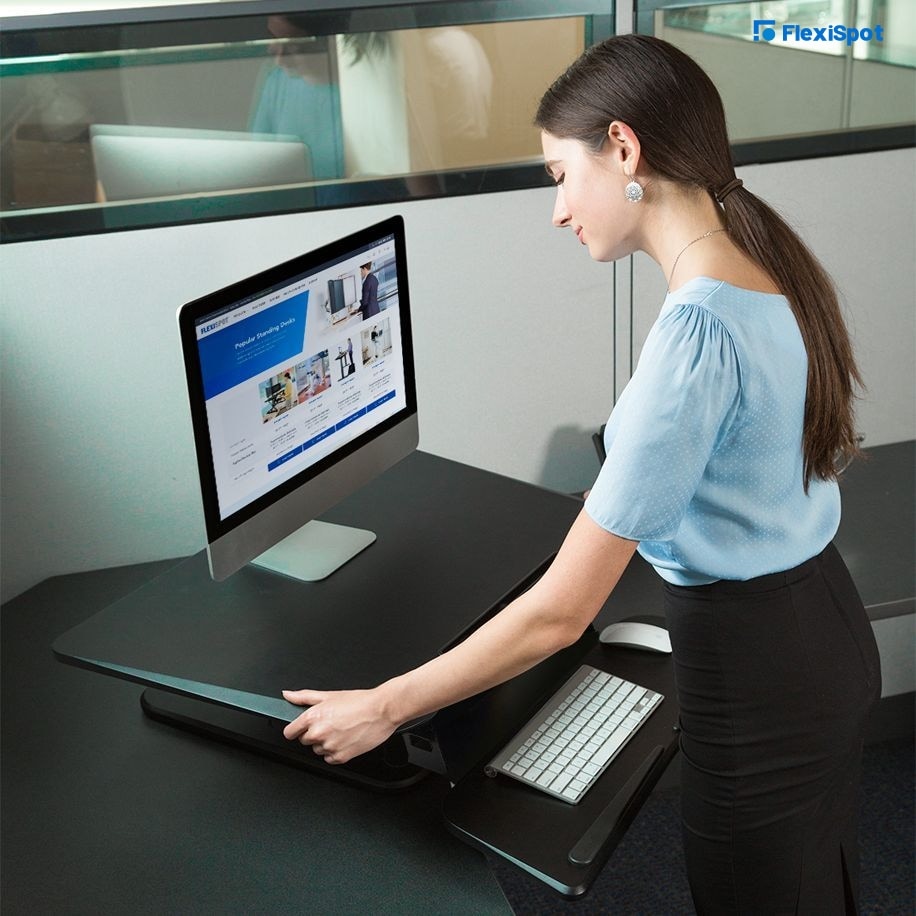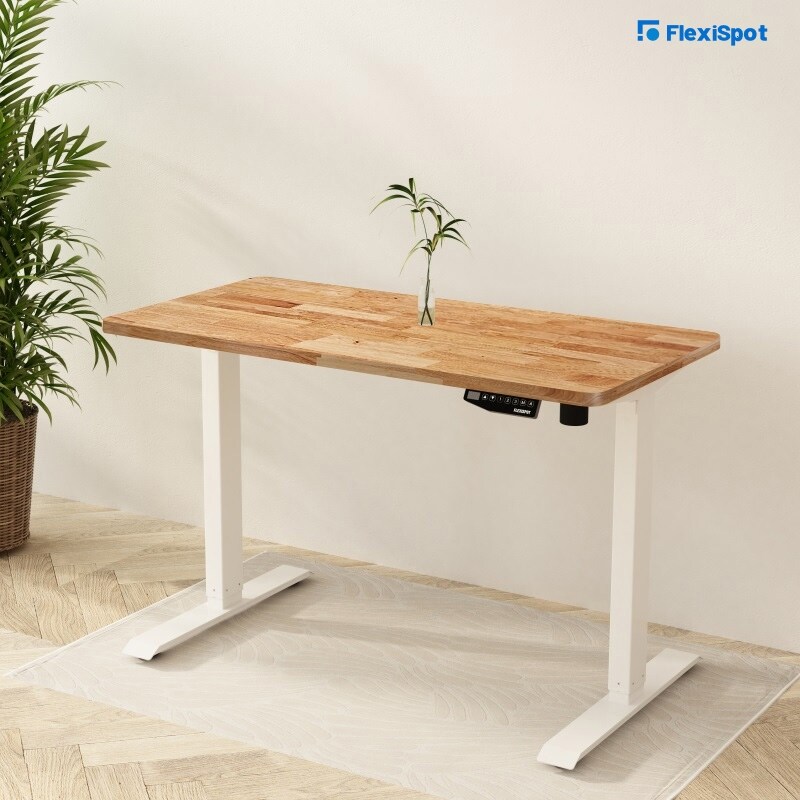Always Keep in Mind That Ergonomics Is an Investment
And it's an excellent one! Though there may be some initial expenditures, you will see a significant return on investment in the form of increased productivity, more efficient functioning, and more innovation on the job as people concentrate on the job at hand rather than their discomfort. You'll notice decreased absence rates and may be cheaper health insurance premiums since fewer workers will need costly operations to treat repetitive strain injuries and other on-the-job ailments.
Why Include Ergonomics in Your Budget?
A lot of companies may not think it is important to add ergonomics into the budget but it definitely is! If you need proof, consider the following average workplace ergonomics ROI metrics:
Payback period of 8.4 months
A 67% decrease in scrap rates and production errors
Productivity has increased by 25%
Injury rates have dropped by 65%
We always stress that ergonomics has far more value in the workplace than simply reducing injuries. Quality and productivity metrics will be impacted by a mismatch between standard work and worker capabilities in production processes, which often results in more waste, direct costs, and lost opportunities than injuries. If, on the other hand, injury prevention is a driving force behind your ergonomics process, here's more evidence to back up your ergonomics budget needs.
How to Budget for Ergonomics?
It's best to think about ergonomics' impact on the daily process of production, not just safety, health, and human resource metrics when budgeting for them.
Moreover, if lowering EHS and HR risk is a priority in the budgeting, Liberty Mutual's data indicates that you should devote a substantial portion of the resources to evaluating and improving ergonomics in the office setting. Your industry, company culture, and loss experience all play a role in determining how much and in what you'll invest and enhance ergonomics, but as you build the budget, keep at least these requirements in mind:
Training for those in charge of ergonomics, which should ultimately include most or all personnel, but at the very least those in charge of operations, process design, sales, continuous improvement, or any employees that engage in prolonged sitting for work.
The tools, techniques, and equipment you'll need to evaluate, measure, and optimize your work processes correctly.
The external or internal knowledge you'll need to design and implement a long-term ergonomics improvement strategy.
The cross-functional teams in charge of improving your ergonomics process.
The methodologies and metrics you'll use to gauge success, as well as how you'll monitor them.
Safety and health losses for ergonomics-related concerns are likely to account for at least 30% of your overall EHS losses, according to our experience, which is backed up by this Liberty Mutual research. As a result, a significant percentage of your EHS risk management expenditure should be devoted to the ergonomics improvement effort.
When you factor in the potential for ergonomics to improve production quality and productivity metrics —an 8.4-month payback period, a 67 percent reduction in errors, accidents, and injuries, and a 25% increase in productivity— the total company budget and your investment into ergonomics could, and perhaps should, be higher. The amount you spend will be determined by the scope and depth of your current or intended ergonomics process, as well as how fast you aim to implement or enhance it.
Creating an Ergonomics Budget
Whether you are brand new to the study of ergonomics or you wear a "Go Ergo!" button around the workplace for fun, one thing is for sure: if you're not cautious, ergonomics equipment may be expensive. Treadmill desks, for example, may be rather costly, particularly if you purchase many of them. Ergonomic seats, on the other hand, can be an affordable option!
However, this does not rule out ergonomics for small firms with limited equipment budgets, nor does it imply that purchasing ergonomic equipment must be a costly undertaking in the first place.
Examine the Tools You Have
It's all about assessing value when it comes to budgeting. After all, you want to be sure that whatever you invest your money in generates a profit. Not only that, but you want the funds to return the most money possible. This implies that, even if a present solution is providing some value, there may be more out there, thus every item should be scrutinized at least once a quarter.
This entails doing an ergonomic assessment on office equipment. We strongly advise printing out OSHA's workplace checklist and carrying it with you while you inspect every part of each working area. This should be done in conjunction with employee interviews so that you can get actual input on any discomfort your workers are experiencing as well as how effective and productive they can be in their present environment. Ask your staff if you can take a video of them for a day so you or your professional ergonomist can monitor how they are actively utilizing that area.
It might seem like a huge amount of work, but it will help you build more informed, focused choices about what to retain, what to discard, and what to replace.
Seek Alternatives That Will Provide the Most Value
Moving ahead, it's critical to be just as smart in selecting new equipment as you were in analyzing the old. You'll want to read a lot of user reviews and ask stores for demonstrations or trials of higher-priced things so you can evaluate for yourself whether or not every option is perfect for you. Furthermore, it is critical to seek things that will yield the most return for the least amount of money invested.
An ergonomic chair, for instance, could be worth it for a worker with persistent back pain, but it might not be the best option for someone who works at an adjustable desk, and so, seldom sits in the chair. Remember that minor attachments, such as an ergonomic mouse, ergonomic keyboard, or a monitor arm, can give the most significant and far-reaching advantages for a fraction of the cost.
Include A Portion for Experimentation
If you don't have the funds to completely redesign everyone's workstations, why not just have a few workers volunteer to be guinea pigs for different solutions? This allows you to check out a variety of things before settling on a single brand or set of solutions.
When you designate the cash here as your "experimental equipment fund," it won't seem like you're losing money if one or two products don't pan out. In reality, the experimental budget can save you money by assisting you in determining where your most important investments should be made.
Involve a Professional
Hiring an ergonomist as an advisor may seem like a huge investment upfront, but it's one that pays off big time, particularly if you're just getting started with ergonomics. An ergonomist can help you identify the challenges at hand, provide a variety of imaginative solutions you might have not considered and may have contacts with suppliers who may get you a discount you can't refuse.
Reduce The Size of Other Parts of the Body
When with any type of budgeting, it's critical to establish what may be trimmed as you examine all of the line items. This applies not just to your ergonomics budget, but also to your overall budget, which may be utilized to make room for your equipment. Take a moment to consider if each item is genuinely resulting in improved revenues while keeping expenses down.
Additionally, you may want to consider creating a "fantasy" budget, a "bare-bones" budget, and a budget that falls somewhere in between when you create your new ergonomics budget. This way, you'll be able to identify all of the answers you believe you'll need, but you'll also be forced to establish priorities for now and in the future. Staggering purchases across a number of years might be a smart approach for constrained finances.
Improving Ergonomics with Standing Desks
FlexiSpot is a leading ergonomic office furniture manufacturer, specializing in standing desks. Adjustable standing desks like Willow Solid Wood Standing Desk can greatly improve the health and ergonomics of your office space. It can be adjustable for your height and personal preferences with the push of a button! And it offers the chance for your employees to take a break from sitting for prolonged periods, which is really bad for their health, and increase their physical activity for the day. This can reduce back, shoulder, and neck pain as well as reduce their risk for obesity, cancer, heart conditions, and diabetes.


